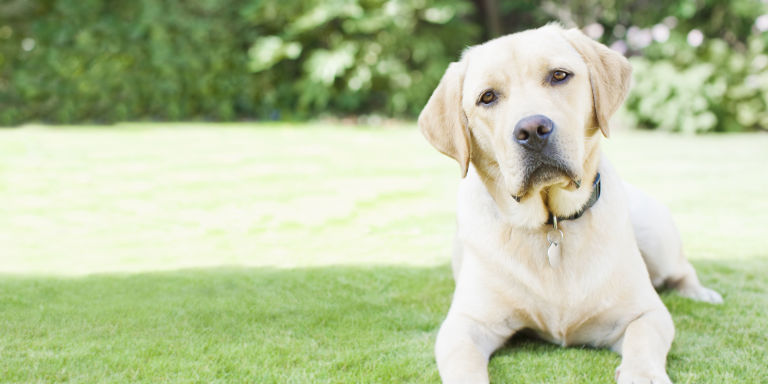When friends and family get thrown together, it’s not just the humans that need to get along. Add a few unfamiliar dogs – not to mention cats, house rabbits and backyard chickens – and feathers, and fur, will usually fly.
Bringing a dog into a busy household requires careful thought, especially if you already share it with other creatures. A breed that’s programmed to get on well with anything it is likely to meet is vital, and there’s really only one group of dogs that fits the bill.
“Gundogs are bred to be sociable, not reactive,” says dog trainer and behaviourist Carolyn Menteith. “On professional shoots, they’re thrown into the back of Land Rovers with lots of strange dogs and people and they’re expected to get along.”
With their gentle mouths and friendly personalities, retrievers, such as Labradors, flat-coats and golden, are top of the temperamental league table. Spaniels, on the other hand, may find it harder to ignore your garden hens.
Choosing a breeder who has introduced puppies to children and other animals is also crucial (see overleaf). But no amount of socialisation and training can be guaranteed to counteract genetically programmed instincts. If you have cats and rabbits, terrier and sight-hound breeds
that were bred to kill small mammals are best avoided.
These are the top 3 most sociable dog breeds…
1. GOLDEN RETIEVER
One of the world’s most popular breeds, the golden retriever has a famously gentle temperament, happily cohabiting with any creatures it has been socialised with. The first goldies were bred in Scotland by Lord Tweedmouth who, during the late 19th century, acquired a pale-coloured flat-coated retriever and crossed
it with the (now-extinct) Tweed water spaniel.
Its descendents were bred on over several decades, until the golden retriever – whose ancestry also includes the Irish setter – was recognised
as a named breed in 1920. Today, its stamina, intelligence and trainability are put to use in working roles from disability assistance and pet therapy to search-and-rescue and country sports.
But this gentle gundog relishes life as a member of an active household, provided it gets long walks, stimulating play and lots of affection.
Bred to retrieve game from land and water, the goldie loves to swim, so if you can’t bear the smell of wet dog, it isn’t for you. Irresponsible breeding can result in rogue traits, including snappiness, so find a responsible breeder (using The Kennel Club’s Assured Breeder Scheme) to ensure checks for hereditary diseases have been carried out.

PROFILE
Country of origin: Great Britain
Original purpose: Retrieving game birds
Life expectancy: 12-14 years
Height range: 51cm-61cm
2. POINTER
As elegant in the flesh as they appear in 18th- and 19th-century oil paintings, pointers have been the companions of nobility for centuries. The breed often called the English pointer (although its official Kennel Club name is pointer) is as long of limb and pert of nose as its European antecedents.
However, its aristocratic bearing belies the affectionate and playful nature that makes it such a delightful pet. Biddable, it can be just as easy-going with other animals as it is with its human family.
With its strong sense of smell, the pointer’s job was to track game. Upon sighting a bird or hare, it would stand still and ‘point’ with its nose and cocked front leg, waiting patiently for its master to catch up and deploy his weapon or hounds.
Such patience and control, bred into it for centuries, probably explains its reputation as a reliable housemate for other dogs and pets that it has been raised with. It may, however, be unable to resist the urge to chase unfamiliar furries.
These are loving, docile animals to have around, but only if they get enough exercise. Pointers are among the most athletic of dogs, and need a good daily gallop. But don’t be surprised if they ignore your commands once they pick up a scent.

PROFILE
Country of origin: Great Britain
Original purpose: pointing and tracking game
Life expectancy: 12-14 years
Height range: 61cm-69cm
3. POODLE
The canine topiary practised on poodles primped for the show ring has done a disservice to this ancient and hardy gundog. Known as the ‘show clip’, an exaggerated version of the way in which they were once clipped to protect their joints in cold water, the show dogs’ pom-poms and top knots lend a fussy, frivolous image that couldn’t be more at odds with this breed’s amiable personality and working credentials.
The poodle originated in Germany in the Middle Ages as a water dog, bred to retrieve waterfowl (its French name, caniche, means ‘duck dog’). And, like all retrieving gundogs, it is highly sociable, eager to please and easy to get along with – whether you’re human, canine or feline.
Its energy and playful personality make it a great country companion, and it is so easy to train that you can raise it to be reliable around creatures that share your household or smallholding.
There are three sizes of poodle: standard (large), miniature and toy, all of which date back at least 500 years. Half a century ago, it was the world’s most fashionable dog. Today, it is once more in the spotlight as the parent of crossbreeds, such as labradoodles, cockerpoos and goldendoodles.
These are often marketed as ‘low-allergy’ dogs, even though there’s no guarantee they’ll inherit a non-shedding coat.

PROFILE
Country of origin: Germany
Original purpose: Retrieving waterfowl
Life expectancy: 11-15 years
Height range:
37.5cm-45cm












